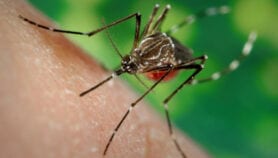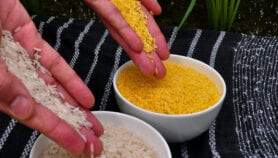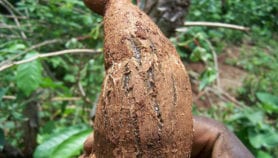By: Lei Du
Send to a friend
The details you provide on this page will not be used to send unsolicited email, and will not be sold to a 3rd party. See privacy policy.
[BEIJING] Genetically modified (GM) rice reduces health risks for farmers and increases their profits because it demands far fewer pesticide applications than conventional rice, according to research in China.
The joint Chinese-US study, published today (29 April) in Science, also shows that one of the two types of GM rice under investigation had slightly higher yields than non-GM rice.
Lead author Jikun Huang of the Beijing-based Center for Chinese Agricultural Policy says the team’s goal was to evaluate whether rice modified to resist attack by insect pests could improve farmers’ livelihoods and wellbeing.
The researchers found that farmers growing GM rice reduced their pesticide use by nearly 80 per cent.
“In fact, 62 per cent of farmers who cultivated GM rice didn’t use any pesticide at all,” says Huang. In contrast, farmers growing conventional rice sprayed pesticides on average 3.7 times each season.
Farmers growing GM rice spent just 31 yuan (under US$4) per hectare on pesticides, while those growing conventional rice spent close to US$30 per hectare.
The benefits of GM rice were not only economic, the study found. Pesticides – which contain toxins that kill insects by affecting their nervous system can also be toxic to people.
According to Huang, tens of thousands of Chinese farmers suffer acute pesticide poisoning each year, and hundreds die because of exposure to the chemicals.
Huang’s team found that while up to 11 per cent of farmers growing non-GM rice had symptoms of pesticide poisoning, none of those growing GM rice did.
“The study shows that there is vast potential for gains, both economic and health-wise, from adopting GM rice,” says David Zilberman, an agricultural economist at the University of California, Berkeley.
The research was done in Hubei and Fujian provinces as ‘preproduction trials’ – the final stage of testing before a GM crop can be approved for commercialisation in China.
Huang is optimistic that the government will approve the GM rice soon.
If so, says Zilberman, “it will lead to the adoption of GM rice in other Asian countries”.
Huang and colleagues compared 123 household farms growing GM rice with 224 plots growing non-GM rice in 2002 and 2003.
The two types of GM rice assessed were Xianyou 63 and II-Youming 86. The former contains a bacterial gene that produces a poison that kills insects feeding on the rice, but is harmless to birds or mammals.
The second variety is also toxic to insects but contains a gene from the cowpea plant.
Reference: Science 308, 688 (2005)
Read more about GM crops in SciDev.Net’s GM crops dossier.













